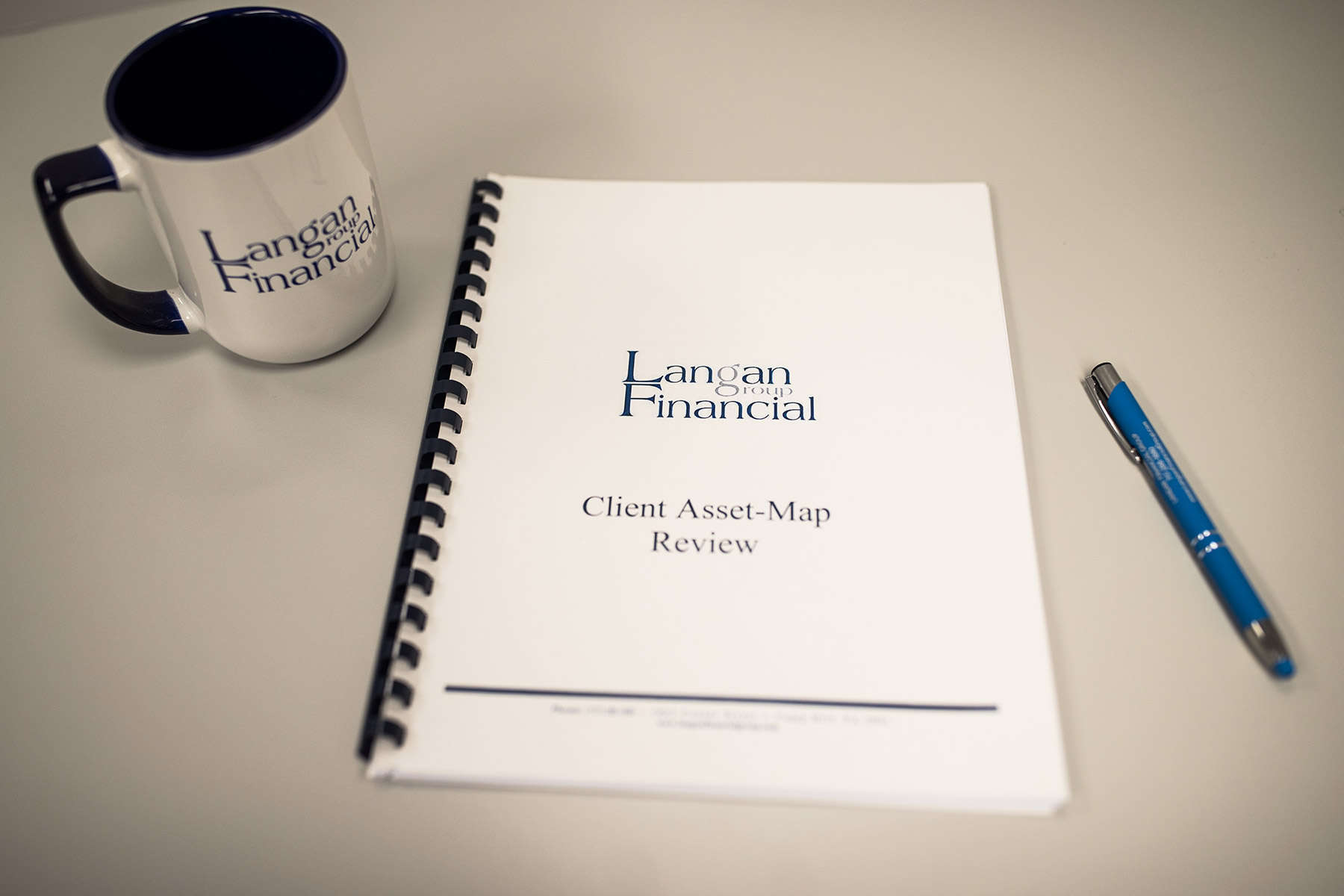Understanding how much money you need to retire is one of the biggest questions we get from our clients, and it is one question we find they do not think about soon enough, or often enough.
It is a question that lacks a one-size-fits-all answer, as the ideal retirement savings can vary greatly depending on individual circumstances, lifestyle choices, and financial goals. We encourage everyone to sit down with a financial advisor no matter where they are on their journey to retirement. Look at your income, savings, assets, and liabilities and create a path towards a comfortable retirement.
When determining how much money you need to retire, we encourage our clients to think about three things:
- Expenses
- Amount Per Year
- Goals/Unexpected Events
What are My Retirement Expenses?
The first step in calculating your retirement needs is to understand your anticipated expenses during this phase of life. Not only do you need to include where you are planning on retiring, you have to anticipate inflation, likely healthcare challenges and more. Being caught with a major expense that is not factored into your retirement can cause significant upheaval at a time you cannot change past planning – during your post-retirement years.
Make an estimate of your annual basic living expenses, such as:
- Food
- Utilities
- Housing
- Healthcare
- Transportation
Additionally, factor in discretionary expenses, including:
- Travel
- Leisure activities

How Much Do I Want in Retirement?
With a clear understanding of your anticipated retirement expenses and income, you can now determine your retirement number – the amount of savings required to sustain your desired lifestyle throughout retirement.
One common tactic is the 4% rule – this is a widely recognized guideline for retirement planning that suggests withdrawing 4% of your retirement savings annually after retirement to cover expenses. This rule was developed based on historical market performance and aims to provide a sustainable withdrawal rate that helps your savings last throughout retirement.
Here is a simplified breakdown of how the 4% rule works and why it is used:
Example:
If you anticipate needing $50,000 per year to cover your expenses in retirement, you will aim for retirement savings of $1.25 million. This calculation is derived by dividing the desired annual income ($50,000) by the 4% withdrawal rate.
The 4% rule is used because it strikes a balance between providing a steady income stream in retirement and preserving your savings for the long term. You can continue to invest the savings as you live on the withdrawals you set up as part of your 4%. It factors in inflation adjustments and historical market returns to help retirees plan their withdrawals effectively. However, it is essential to adjust this figure based on your unique circumstances, such as longevity, healthcare needs, inflation rates, and any unexpected expenses that may arise during retirement.
Consulting with a financial advisor can help tailor this rule to fit your specific financial goals and situation. It is essential to consider your unique circumstances and adjust this figure accordingly.
How Do Taxes Impact My Retirement?
Taxes play a significant role in retirement planning, especially when comparing Roth and Traditional retirement accounts. Both account types have different tax treatments that can impact retirement income.
1. Roth IRA/401(k): Contributions to Roth accounts are made with after-tax dollars, meaning you have already paid taxes on the money before it goes into the account. The advantage of Roth accounts is that qualified withdrawals, including earnings, are tax-free in retirement. This can be beneficial for retirees who anticipate being in a higher tax bracket in retirement or want tax-free income flexibility.
It also provides the ability to anticipate your annual income from your Roth IRA – as you won’t have to pay taxes on your withdrawal – taxes that could increase significantly between when you contributed, and when you plan to start taking disbursements.
2. Traditional IRA/401(k): Contributions to Traditional accounts are made with pre-tax dollars, reducing your taxable income in the year of contribution. The contributions and earnings grow tax-deferred until withdrawal. In retirement, withdrawals from Traditional accounts are taxed as ordinary income. This can be advantageous if you expect to be in a lower tax bracket in retirement compared to your working years.
Here is an example to illustrate the impact of taxes using the 4% rule with a $1 million retirement savings in both Roth and Traditional accounts:

1. Roth Account: Assuming a 4% withdrawal rate, you would withdraw $40,000 in the first year tax-free. Since Roth withdrawals are not taxed, your retirement income remains $40,000.
2. Traditional Account: With a Traditional account, the $40,000 withdrawal is considered taxable income. If, for instance, your effective tax rate in retirement is 15%, you would owe $6,000 in taxes on the $40,000 withdrawal, leaving you with $34,000 as your after-tax retirement income.
In this scenario, the Roth account provides a higher after-tax retirement income compared to the Traditional account due to its tax-free withdrawal feature. However, the decision between Roth and Traditional depends on individual factors such as current and expected future tax rates, income levels, and retirement goals. Consulting with a tax advisor or financial planner can help determine the most tax-efficient strategy for your retirement savings.
How Do I Calculate My Retirement Income?
Calculating your retirement income involves assessing various sources such as Social Security benefits, pensions, and retirement accounts. Here is a guide to help you estimate your retirement income and prepare for retirement:
1. Social Security Benefits:
Tool: Use the Social Security Administration’s (SSA) online calculator or create a mySocialSecurity account on their website to access your earnings history and estimate your future benefits.
Direction: Log in to your mySocialSecurity account or visit the SSA website and input your earnings history to receive personalized benefit estimates based on your work record. Consider factors like your full retirement age (FRA) and potential adjustments for early or delayed claiming to determine the optimal time to start receiving benefits.
2. Pensions:
Tool: Contact your employer’s HR department or pension administrator to obtain information about your pension benefits, including eligibility criteria, benefit formula, and expected payout options.
Direction: Request a pension estimate based on your years of service, salary history, and retirement age. Consider any spousal or survivor benefits if applicable. Factor in potential cost-of-living adjustments (COLAs) to account for inflation.
3. Retirement Accounts and Investments:
Tool: Utilize retirement planning calculators available online or consult with a financial advisor to analyze your retirement accounts, including 401(k)s, IRAs, and other investments.
Direction: Gather information on your account balances, contribution rates, asset allocation, and expected investment returns. Use retirement calculators to project future account values and potential income streams during retirement based on various withdrawal strategies.
Additional Averages/Stats:
– According to the SSA, the average retired worker receives around $1,500 per month in Social Security benefits (as of 2022).
– Pensions vary widely depending on employer plans, but the Pension Benefit Guaranty Corporation (PBGC) provides protections for many private pension plans.
– Retirement account balances also vary, with the average 401(k) balance for workers aged 60-69 estimated at around $195,000 (as of 2021).
By utilizing these tools and resources, you can gain a clearer understanding of your projected retirement income from different sources. It is essential to regularly review and update your estimates as you approach retirement to ensure you are on track to meet your financial goals and bridge any income gaps effectively.
3 Biggest Variable Factors in Retirement
Longevity risk: the possibility of outliving your retirement savings – is a significant concern for many retirees.
Life Expectancy: With advances in healthcare and increasing life expectancies, retirees are spending more years in retirement than ever before. Consider your family history, lifestyle choices, and overall health when estimating your life expectancy.
Inflation: Additionally, factor in inflation, which erodes the purchasing power of your savings over time. Historically, the average inflation rate has been around 3%, but it is wise to plan for higher rates to safeguard your retirement funds against rising costs.
Strategies for Boosting Retirement Savings
If you find that your projected retirement savings fall short of your desired retirement number, don’t despair. There are several strategies you can employ to boost your retirement savings and enhance your financial security.
Start by maximizing contributions to your employer-sponsored retirement plans, such as 401(k)s or 403(b)s, taking advantage of employer matching contributions if available.
Consider contributing to individual retirement accounts (IRAs) or other tax-advantaged retirement accounts to further bolster your savings.
Additionally, revisit your investment strategy to ensure it aligns with your risk tolerance and retirement goals, seeking guidance from a financial advisor if needed.

What Can I Do to Help My Retirement?
Determining how much money you need to retire is a complex and highly individualized process. By carefully evaluating your retirement expenses, income sources, longevity risk, inflation, and savings strategies, you can develop a comprehensive retirement plan that aligns with your financial goals and aspirations. It’s not too late to start, and everyone should be planning their retirement, whether they’re at the beginning of their career, or towards the end. We can help you determine what track makes the most sense for your needs and help you establish a retirement savings plan and routine.
Remember, retirement planning is not a one-time event but an ongoing journey that requires periodic review and adjustments as your circumstances change. With diligent planning and prudent financial management, you can embark on your retirement with confidence and enjoy a fulfilling and financially secure future.
About the Authors
Alexander Langan, J.D, CFBS, currently serves as the Chief Investment Officer at Langan Financial Group. In this role, he manages investment portfolios, acts as a fiduciary for group retirement plans and consults with clients regarding their financial goals, risk tolerance and asset allocation.

With a focus on ERISA Law, Alex graduated cum laude from Widener Commonwealth Law School. He then clerked for the Supreme Court of Pennsylvania and worked in the Legal Office of the Pennsylvania Office of the Budget, where he assisted in directing and advising policy determinations on state and federal tax, administrative law, and contractual issues.
Alex is also passionate about giving back to the community, and has helped establish The Foundation of Enhancing Communities’ Emerging Philanthropist Program, volunteers at his church, and serves as a board member of Samara: The Center of Individual & Family Growth. Outside of work and volunteering, Alex enjoys his time with his wife Sarah and their three children, Rory, Patrick, and Ava.

Reid Ruark currently serves as an Associate Investment Advisor at Langan Financial Group where he assists Alex in managing investment portfolios, prepares client reviews, and helps operate social media platforms. In his free time, Reid enjoys spending time with his wife, playing pickleball and connecting with members of the community.
About Langan Financial Group
Langan Financial Group is an independent financial planning firm located outside of Harrisburg, Pennsylvania. Established in 1985, Langan Financial Group offers a broad range of financial planning services. With an open architecture platform, our advisors have access to a diverse range of products, free from any sales quotas. Our team of financial experts, each with unique specialties, enhances our ability to deliver value to clients.
Disclosures
The information in this material is not intended as tax or legal advice. Please consult legal or tax professionals for specific information regarding your individual situation. The opinions expressed and material provided are for general information.



